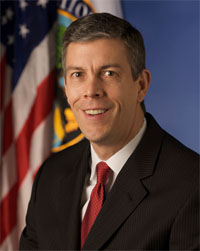Not all post-DOMA changes lead to more benefits
There was a flurry of activity among federal agencies this month to issue regulations concerning how they are complying with the U.S. Supreme Court decision striking down the key provision of the Defense of Marriage Act (DOMA). All of them were aimed at making sure same-sex marriage couples were treated equally, but not all of them resulted in a positive gain.
On Monday, the U.S. Treasury and the Internal Revenue Service issued a notice that governs how employees with same-sex spouses may sign up their spouses for health coverage and avoid paying taxes on the benefit, as straight married couples have been able to do. Previously, under DOMA, employers could not allow employees with same-sex spouses to elect coverage for that spouse on a “pre-tax basis.”
Also on Monday, the U.S. Social Security Administration announced it is now processing and paying claims for benefits of “some” surviving spouses’ of same-sex marriages.
“In addition,” said SSA Acting Commissioner Carolyn Colvin, “we are able to pay some one-time lump sum death benefit claims to surviving same-sex spouses.”
According to SSA spokesman William Jarrett, a widow or widower may receive reduced survivors’ benefits as early as age 60, and full survivors’ benefits once they reach the “full retirement age.” Full retirement age for people born between 1945 and 1956 is currently 66. Over time, however, that will increase. The full retirement age for people born in 1962 or later will be 67.
“If you’re surviving spouse is disabled, benefits can begin as early as age 50,” said Jarrett. “Your widow or widower can receive benefits at any age if she or he takes care of your child who is receiving Social Security benefits and younger than age 16 or disabled.”
Interestingly, a SSA press release quoted Commissioner Colvin as urging, “If you believe you may be eligible for Social Security, I encourage you to apply now to protect against the loss of any potential benefits.”
Asked what might cause a “loss of any potential benefits,” Jarrett said, “We don’t want an individual to delay filing an application because he or she is uncertain of the rules. A person is typically protected back to the date the application is originally filed.” SSA’s press release said it is developging “additional policy and processing instructions” in the coming weeks.
“If you are in a same-sex marriage or other legal same-sex relationship, even if you live in a state that prohibits same-sex marriage,” says the SSA website, “we encourage you to apply right away.”
But not all compliance changes in the post-DOMA aftermath improve circumstances for same-sex couples. For instance, the U.S. Department of Education on Friday announced a new policy related to eligibility for federal student loans. Under DOMA, the Department of Education could not seek information about a student’s same-sex spouse and what income that person might contribute to the student’s financial picture. Nor could they look at the contribution of a non-biological parent either married to or living with the student’s biological parent. In many cases, that probably helped a student seeking federal needs-based student aid.
A December 13 press release from the DOE says it will now consider a student loan applicant married if he or she “was legally married in any jurisdiction that recognizes the marriage, regardless of whether the marriage is between a couple of the same sex or opposite sex, and regardless of where the student or couple lives or the student is attending school.”
Students who need financial aid for their college education can apply through the Free Applications for Federal Student Assistance, or FAFSA, under the Department of Education. The program gives out over $150 billion each year in grants, loans, and work-study funds to help pay for college education for more than 15 million students. In fact, it is the largest provider of student financial aid in the country. About 22 million students apply each year.
Information provided on the FAFSA form is used to determine how much a student and his or her family can be expected to contribute to school costs and how much he or she might be eligible to receive from the federal needs-based student aid.
Where, under DOMA, the FAFSA would not collect data on same-sex spouses or parents in same-sex marriages, now it will. And this is the part of the post-DOMA change DOE’s press release focused on.
“We must continue to ensure that every single American is treated equally in the eyes of the law, and this important guidance for students is another step forward in that effort,” said U.S. Secretary of Education Arne Duncan in the press release. “As students fill out their FAFSA this coming year, I’m thrilled they’ll be able to do so in a way that is more fair and just.”
The new FAFSA forms will be gay friendlier. They refer to parents not as “Mother” and “Father,” but as “Parent 1” and “Parent 2.” They provide an option for applicants to describe their parents’ relationship status as “unmarried and both parents living together.”



Leave a Reply